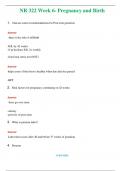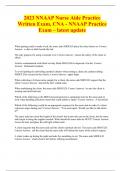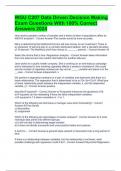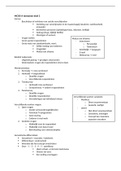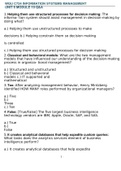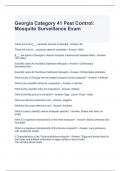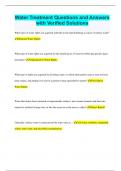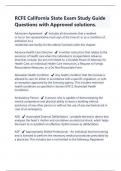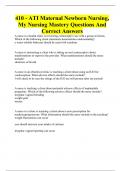Exam (elaborations)
ACLS Precourse Work ( Updated 2024 ) Complete Questions & Answers (Solved) 100% Correct
- Course
- Institution
ACLS Precourse Work ( Updated 2024 ) Complete Questions & Answers (Solved) 100% Correct 1. Lesson1: system of care. Which quality improvement component of systems of care best describes the capture and review of data related to resuscitation education, processes, and outcomes? Answer: Measu...
[Show more]




